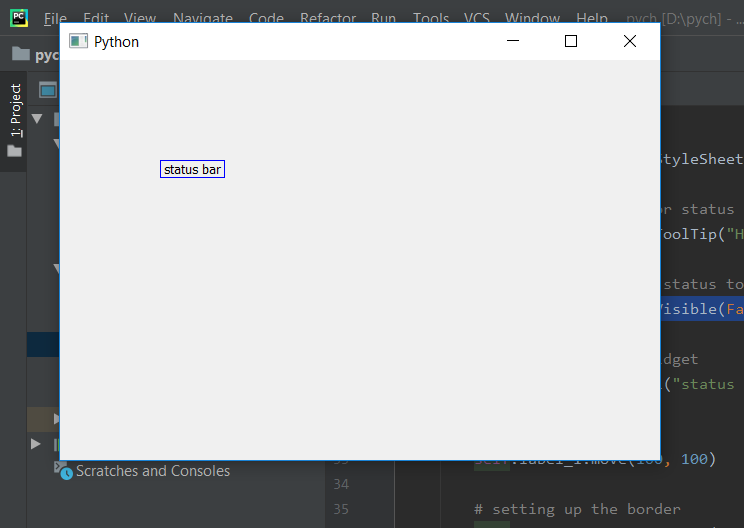En este artículo, veremos cómo hacer que la barra de estado sea visible para el usuario. De forma predeterminada, cuando creamos una barra de estado, es claramente visible para el usuario, pero con la ayuda de setVisibleFalse podemos hacer que la barra de estado sea invisible.
Sintaxis: self.statusBar().setVisible(False)
Argumento: Toma bool como argumento.
Acción realizada: hace que el estado de visibilidad de la barra de estado sea falso
Código:
from PyQt5.QtCore import *
from PyQt5.QtGui import *
from PyQt5.QtWidgets import *
import sys
class Window(QMainWindow):
def __init__(self):
super().__init__()
# set the title
self.setWindowTitle("Python")
# setting the geometry of window
self.setGeometry(60, 60, 600, 400)
# setting status bar message
self.statusBar().showMessage("This is status bar")
# setting border
self.statusBar().setStyleSheet("border :3px solid black;")
# setting tool tip for status bar
self.statusBar().setToolTip("Hello ! from status bar")
# setting visibility status to False
self.statusBar().setVisible(False)
# creating a label widget
self.label_1 = QLabel("status bar", self)
# moving position
self.label_1.move(100, 100)
# setting up the border
self.label_1.setStyleSheet("border :1px solid blue;")
# resizing label
self.label_1.adjustSize()
# show all the widgets
self.show()
# create pyqt5 app
App = QApplication(sys.argv)
# create the instance of our Window
window = Window()
# start the app
sys.exit(App.exec())
Producción :
Publicación traducida automáticamente
Artículo escrito por rakshitarora y traducido por Barcelona Geeks. The original can be accessed here. Licence: CCBY-SA